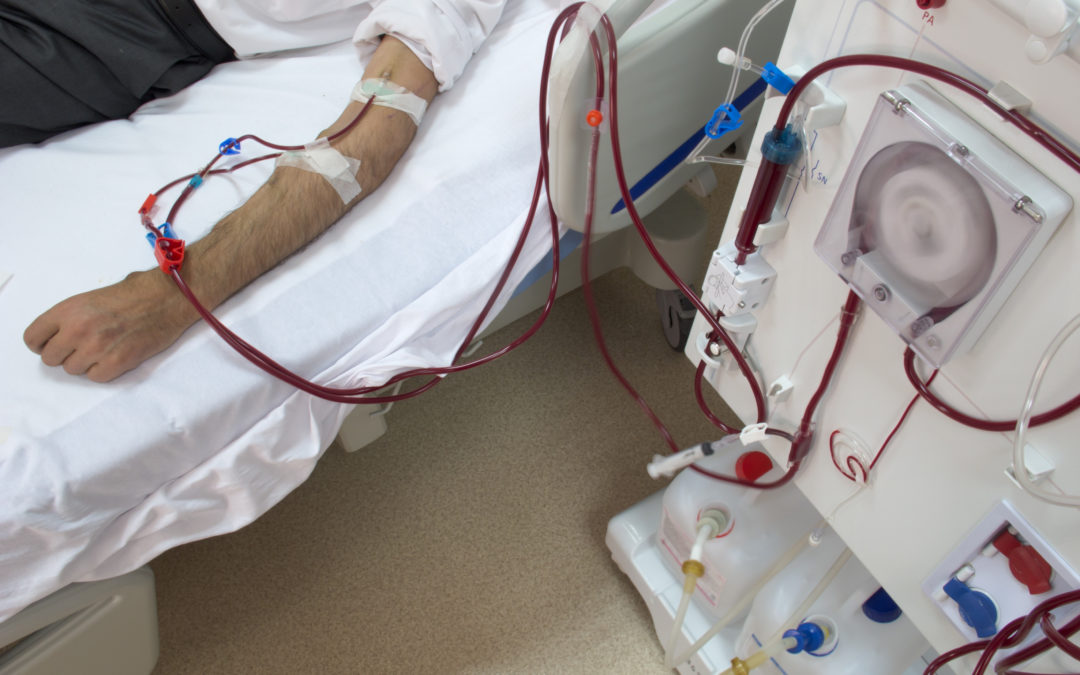Reference
Cavallari C, Dellepiane S, Fonsato V, et al. Online Hemodiafiltration Inhibits Inflammation-Related Endothelial Dysfunction and Vascular Calcification of Uremic Patients Modulating miR-223 Expression in Plasma Extracellular Vesicles. J Immunol. 2019;202(8):2372-2383. doi:10.4049/jimmunol.1800747
At a glance
The study confirms the role of plasma extracellular vesicles (EVs), and in particular of microRNAs transported by plasma EVs, in endothelial dysfunction and vascular calcification of hemodialysis patients. The switch from bicarbonate dialysis (BHD) to online emodiafiltration (OL-HDF) does not change the concentration of plasma EVs but significantly decreases the expression of proaterogenic microRNA (mir-223). In vitro, the reduced expression of mir-223 explains, at least in part, the decrease of the harmful effects of EVs in patients treated with OL-HDF compared to BDH.
What is already known
Patients in hemodialytic treatment have high mortality, mainly secondary to accelerated cardiovascular disease. The increased incidence of cardiovascular events is closely related to the chronic inflammation in chronic kidney disease (CKD) setting resulting in acceleration of aging (Inflammaging). Chronic kidney disease is currently considered a model of premature aging and fragility: several studies have shown that these patients are biologically “older” than healthy subjects with harmful effects on vascular senescence, immunological and cognitive. Recent studies suggest a potential role of plasma extracellular vesicles (EVs) in the pathogenesis of inflammatory disorders and atherosclerosis and, several biological activites may be linked to microRNAs (miRNAs) transported by such vesicles. It has been demonstrated that EVs present in plasma of patients with CKD had pro-inflammatory and pro-trombotic properties modulating endothelial function. In addition, an improvement in inflammatory parameters and cardiovascular outcomes has been demonstrated in patients with end-stage kidney disease (ESKD) in treatment with online emodiafiltration (OL-HDF). This cardioprotective effect can be attributed to a greater clearance of the medium molecules involved in inflammation, endothelial dysfunction and vascular calcification typical of CKD. However, the action of dialysis on the release of plasma EVs and the role of miRNAs transported by plasma EVs in inflammation and vascular damage are not fully known.
Design and Method
This study assessed whether the beneficial effects of OL-HDF are associated with changes in the RNA content of plasma EVs in patients with CKD.
Thirty patients in treatment with bicarbonate dialysis (BHD) were included, randomized in 2 arms 1:1:
* 15 patients continued treatment in BHD
* 15 patients stopped BHD and started OL-HDF.
During the 9-month follow-up, patients’ plasma EVs were evaluated for concentration, size and miRNA content. Subsequently, two different cell lines were incubated with EVs and the biological effects on inflammation, angiogenesis and apoptosis in endothelial cells and on osteoblastic mineralization of smooth vascular muscle cells were evaluated.
Main Results
The study showed that treatment with OL-HDF reduces several inflammation markers such as protein C-reactive, IL-6 and NGAL.
All patients in hemodialytic treatment had a higher concentration of EVs of endothelial origin than healthy subjects, with no significant differences between BHD and OL-HDF as evidence of the presence of microcirculation damage.
However, the EVs of patients treated with BHD had a higher expression of proaterogenic miRNA (miR-223) than healthy subjects and patients in OL-HDF.
In-vitro experiment, EVs of hemodialysis patients compared to those of healthy subjects, induced a lower angiogenesis and a higher percentage of apoptosis in endothelial cells and greater calcification of vascular muscle cells, but all these harmful effects were reduced in OL-HDF patients compared to BHD patients.
Limitations
The main limits of the study are:
1. Reduced sample size
2. No in-vivo experiments
What’s New
Plasma EVs of patients with CKD in hemodialytic treatment express surface proteins and carry miRNA involved in endothelial dysfunction and vascular calcification. OL-HDF treatment, compared to BHD, seems to reduce the expression of proaterogenic miRNAs (miR-223) by plasma EVs and the harmful effects of these plasma EVs in patients undergoing hemodialytic treatment.
What the Prospects
hese results can help explain the biological effects of different dialysis treatment in miRNA modulation carried by plasma EVs potentially involved in inflammation, endothelial dysfunction, atherosclerosis and vascular calcification. A translational study (in-vitro, in-vivo and clinical markers correlation) is currently underway, in order to assess the potential pathogenic role of plasma EVs and to identify new therapeutic weapons to slow the progression of CKD.
By Guido Merlotti and Vincenzo Cantaluppi

